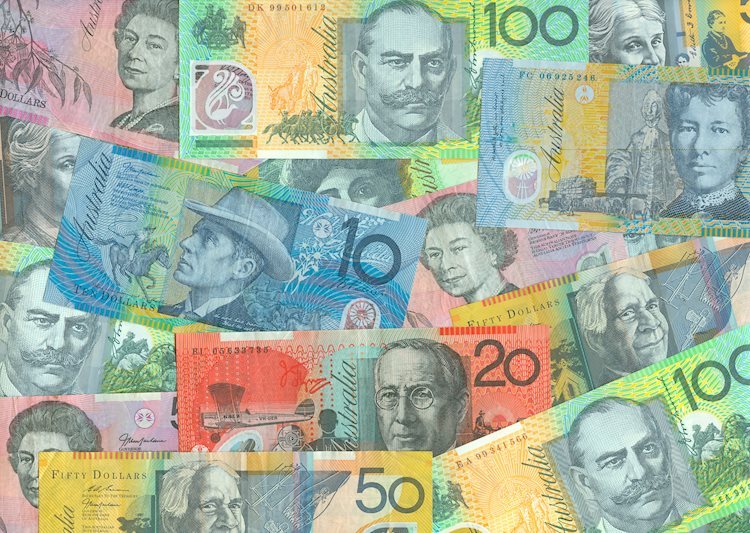- AUD/USD declined by 0.64% to 0.6494 on Wednesday.
- The US Dollar strengthened due to geopolitical concerns and higher US yields.
- A hawkish RBA might limit the downside for the pair.
The AUD/USD declined by 0.64% to 0.6495 on Wednesday. The decline came after the pair touched a one-week high earlier in the session. The move lower was likely driven by a combination of factors, including a rebound in US bond yields that made the US Dollar Index (DXY) rise to yearly highs around 107.00.
That being said, the AUD/USD pair has a slight recovery, supported by hawkish Reserve Bank of Australia (RBA) Minutes and a consolidating US Dollar. The RBA indicated potential future rate adjustments, providing support to the Aussie. Despite these positive factors, AUD/USD faces challenges due to weak Australian and Chinese economic data.
Daily digest market movers: Australian Dollar tumbles as USD demand surges amid hawkish Federal Reserve bets.
- The RBA’s hawkish stance may offer temporary support, but the bearish trend persists.
- The latest Minutes showed that the bank members are considering both rate hikes and rate cuts in the near term.
- The USD regained upside traction amid easing geopolitical concerns and mixed US yields.
- The Federal Reserve’s reluctance to cut interest rates in December weakened the USD and weighed on equities globally.
- In that sense, the CME FedWatch Tool suggests a near 60% chance of a rate cut in the meeting next month after being nearly priced in, which helped the USD recover in the last few sessions.
AUD/USD technical outlook: Pair reversed Tuesday’s gains, and the indicators fell deeper into negative territory
The AUD/USD pair resumed its decline on Wednesday, erasing most of Tuesday’s gains as the Relative Strength Index (RSI) and the Moving Average Convergence Divergence (MACD) indicators remained firmly in negative territory.
The RSI is currently hovering around 40, well below the neutral 50 mark. The MACD line is below the signal line, and the histogram is printing red bars. These indicators suggest that the pair has further room to fall before finding support.
Australian Dollar FAQs
One of the most significant factors for the Australian Dollar (AUD) is the level of interest rates set by the Reserve Bank of Australia (RBA). Because Australia is a resource-rich country another key driver is the price of its biggest export, Iron Ore. The health of the Chinese economy, its largest trading partner, is a factor, as well as inflation in Australia, its growth rate and Trade Balance. Market sentiment – whether investors are taking on more risky assets (risk-on) or seeking safe-havens (risk-off) – is also a factor, with risk-on positive for AUD.
The Reserve Bank of Australia (RBA) influences the Australian Dollar (AUD) by setting the level of interest rates that Australian banks can lend to each other. This influences the level of interest rates in the economy as a whole. The main goal of the RBA is to maintain a stable inflation rate of 2-3% by adjusting interest rates up or down. Relatively high interest rates compared to other major central banks support the AUD, and the opposite for relatively low. The RBA can also use quantitative easing and tightening to influence credit conditions, with the former AUD-negative and the latter AUD-positive.
China is Australia’s largest trading partner so the health of the Chinese economy is a major influence on the value of the Australian Dollar (AUD). When the Chinese economy is doing well it purchases more raw materials, goods and services from Australia, lifting demand for the AUD, and pushing up its value. The opposite is the case when the Chinese economy is not growing as fast as expected. Positive or negative surprises in Chinese growth data, therefore, often have a direct impact on the Australian Dollar and its pairs.
Iron Ore is Australia’s largest export, accounting for $118 billion a year according to data from 2021, with China as its primary destination. The price of Iron Ore, therefore, can be a driver of the Australian Dollar. Generally, if the price of Iron Ore rises, AUD also goes up, as aggregate demand for the currency increases. The opposite is the case if the price of Iron Ore falls. Higher Iron Ore prices also tend to result in a greater likelihood of a positive Trade Balance for Australia, which is also positive of the AUD.
The Trade Balance, which is the difference between what a country earns from its exports versus what it pays for its imports, is another factor that can influence the value of the Australian Dollar. If Australia produces highly sought after exports, then its currency will gain in value purely from the surplus demand created from foreign buyers seeking to purchase its exports versus what it spends to purchase imports. Therefore, a positive net Trade Balance strengthens the AUD, with the opposite effect if the Trade Balance is negative.


